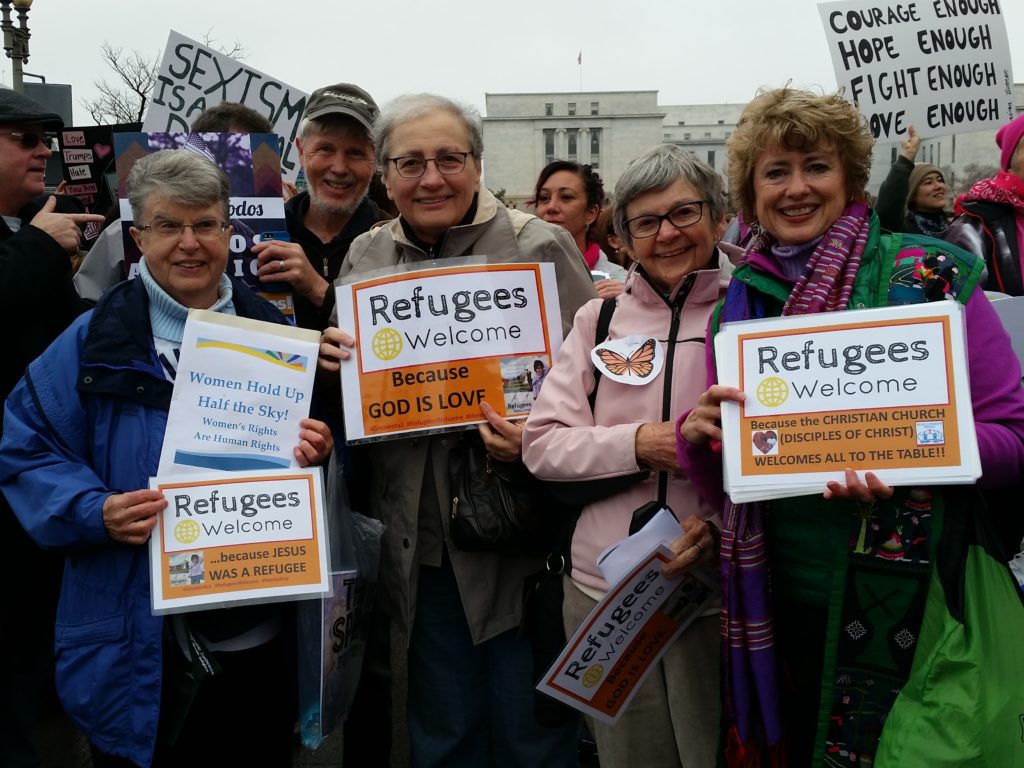April, 2018 Monthly Reflection
April 2, 2018St. Josephine Bakhita: A Journey Many Know Today
Elizabeth Murphy, Intercommunity Peace & Justice Center
We have come to know Saint Josephine Bakhita to be a symbol of hope in the work against human trafficking. Although she died in 1947, her story is still relatable for an estimated 40 million people in forced labor, sexual servitude, and forced marriages around the world today.
Born in Sudan, Bakhita was taken from her family at the age of seven. She was sold at such a young age, that she doesn’t remember the name that she was given at birth. Bakhita, “fortunate one,” was a name given to her by her enslavers. After she was kidnapped and sold into slavery, Bakhita was sold and resold, and eventually ended up in Italy.
Her life in slavery mainly consisted of domestic work, not unlike many immigrant trafficking survivors right here in the United States. Today, there have been reports of immigrants being trafficked into labor on farm fields, on construction sites, in private homes, and forced into sexual servitude right in our backyards.
Bakhita eventually wound up in the company of the Daughters of Charity of Canossa, where she was baptized and given a new name, Josephine. Six years later, she chose to become a member of the Canossian Sisters community and was well loved in her community until her death.
St. Josephine Bakhita’s story reflects the reality of our migrant brothers and sisters around the world who through force, fraud, or coercion, are exploited. Whether forcefully taken from their homes, or on the move due to violence, war, natural disaster, persecution, or economic hardships, migrants and refugees are particularly susceptible to human trafficking.
Since St. Josephine’s time, we have made progress, although not nearly enough. Today human trafficking is illegal in every country around the world, and governments, nonprofit organizations, and the United Nations are working hard to understand trafficking and strategize together to end it. The Alliance to End Human Trafficking have addressed the link between migration and trafficking in their advocacy work.

Although we’ve made significant progress, the global reality is that one in four victims of forced labor are exploited outside of their country of origin. What can we do as individuals and communities to end this? How can we work for a world where no one who migrates is trafficked?
- Support immigrant and refugee rights at home and abroad. Here in the United States, there are a number of actions to be taken. From demanding that the administration reauthorize Temporary Protected Status, to ensuring Dreamers have a pathway to citizenship.
- Address the root causes of human trafficking. Many of the root causes of human trafficking are also push factors of migration. We can support organizations, such as Catholic Relief Services, who are addressing poverty around the world as well as local organizations that serve and support immigrants, refugees and human trafficking survivors in your area.
- Raise awareness. Educate your community about human trafficking by holding a monthly vigil, inviting a speaker to your congregation or church, or organizing a book group or film screening on the issue of human trafficking. The Intercommunity Peace & Justice Center has a number of books and DVDs available for loan.
As we remember St. Josephine’s life and legacy, we invite you to take action and work for a world in which stories like Bakhita’s and trafficking victims all over the world are a thing of the past.
Tags: Bakhita, Saint Josephine BakhitaCategory: Awareness, Monthly Reflections, The Alliance to End Human Trafficking

